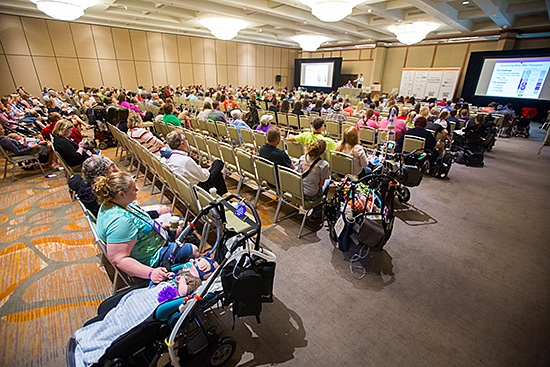SMA Community and FDA to Meet in Washington Area on New Therapy Development

A meeting that the spinal muscular atrophy (SMA) community is having with Food and Drug Administration officials in the Washington area next week is full, but will be live-streamed.
The gathering on April 18 in Hyattsville, Maryland, will focus on the development of therapies for SMA. Patients, their families and caregivers are among those who signed up for the event, which will run from 8 a.m. to 5 p.m. Eastern time. The Webcast will be free.
Spinal muscular atrophy is an inherited disease that affects the part of the spinal cord that controls voluntary muscle movement.
The FDA schedules meetings on a number of diseases, including SMA, to obtain patient perspectives on their conditions and treatment options. It will have held 24 meetings on specific diseases between 2013 and the end of this year.
At the gatherings, patients discuss the impact of their disease on their daily lives. They also talk about how well their treatment options deal with their symptoms. Other perspectives they offer include strategies for managing their disease and their expectations for new approved treatments.
Different groups of panelists at the Hyattsville meeting will represent all patient ages, types and stages of SMA. The information they share will include stories about SMA’s impact on their daily lives.
Discussion periods and surveys will follow each panel session. Those at the meeting or watching by Internet can submit comments during the discussion periods.
A discussion guide will be provided before the meeting to those who registered for the event. The guide, which will include an outline of topics to be covered, is aimed at helping participants formulate comments.
CureSMA announced the gathering on its Web site. It petitioned the FDA in August of 2016 to hold a meeting where the SMA community could expand on information that a few patient representatives gave the agency at a get-together in 2015.
Since that gathering, the FDA has approved an SMA treatment, Spinraza, in December 2016. And there have been advances in research on new therapies.
CureSMA told the FDA there was a need for patients, families, and caregivers to offer their thoughts on the benefits versus the risks of treatments. The hope is that the FDA will take the insight into accounting when reviewing new therapy applications.
“An improvement in prognosis, however small, will result in improvement in SMA patients’ and families’ quality of life and daily independence,” CureSMA said in the letter it sent the FDA in August.







